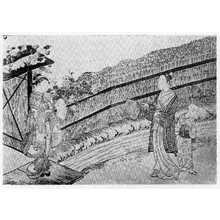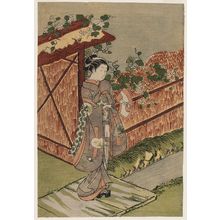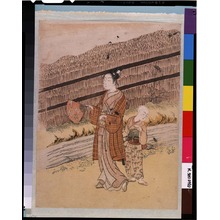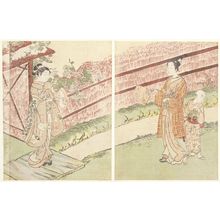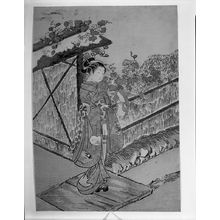Japanese Print "Parody of “Evening Faces”" by Suzuki Harunobu
Artist:Suzuki Harunobu
Title:Parody of “Evening Faces”
Date:c. 1765
Details:More information...
Source:Honolulu Museum of Art
Browse all 5,476 prints...
Description:
This visual parody updates the famous scene from the fourth chapter of The Tale of Genji's “Evening Faces” (Yügao) to Edo period customs. The classical poem and its response have been transformed into the exchange of love letters between a young boy and girl. The witty design is quite amusing: Genji's oxcart and servant have been cleverly transformed into a young attendant carrying an insect cage. This kind of visual parody of classical stories is called mitate. Scenes from well-known classical stories are often depicted with Edo style aesthetics. This humorous style vulgarizes classical stories and relies heavily upon visual symbols and wordplay. Symbolic items included different kinds of flowers (morning glories, evening face, cherry or plum) or thematic groupings such as “irises and a bridge,” etc. To understand the parodies, one needed to be familiar with the classics. Therefore, mitate was mainly enjoyed by upper-class samurai or merchants who had been well-schooled in classical literature. Harunobu invented the multi-color woodblock prints called nishiki-e (literally, “brocade prints”). His prints were often made for important customers for special occasions, such as the New Year. His delicate selection of colors and classical allusions must have been attractive to the newly established middle class. (from Tale of Genji exhibition 1/11/06-)

